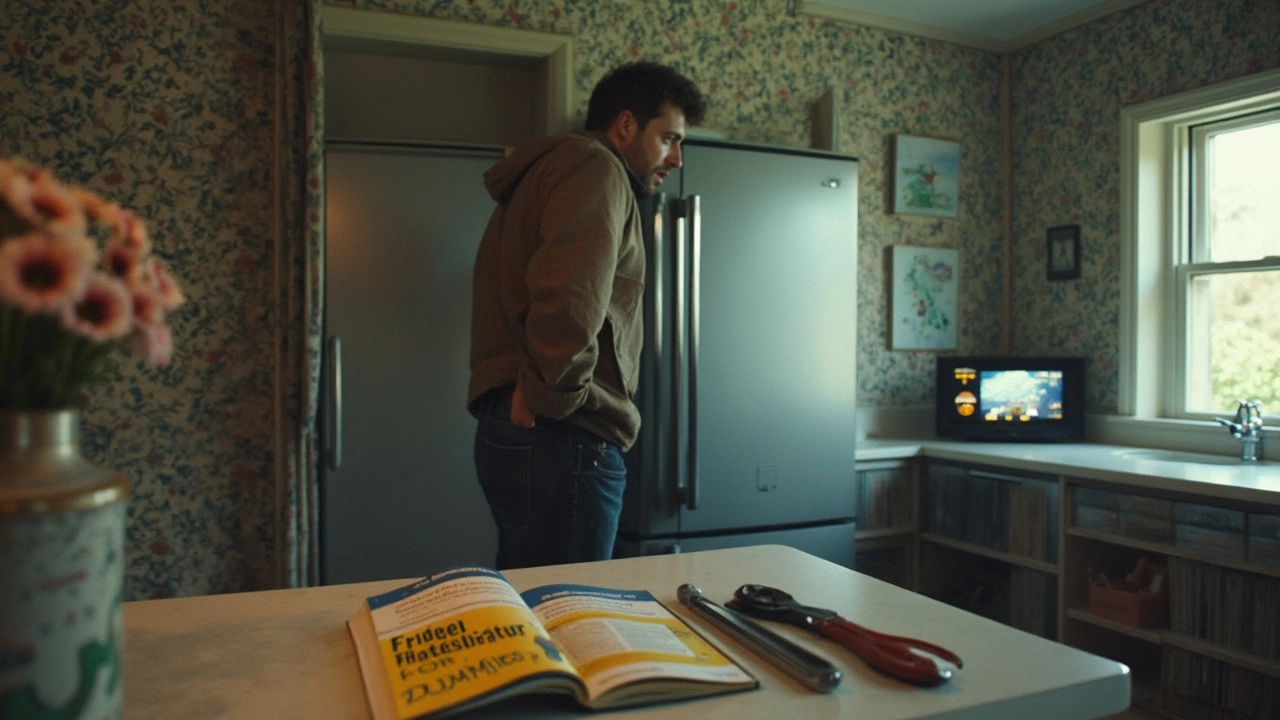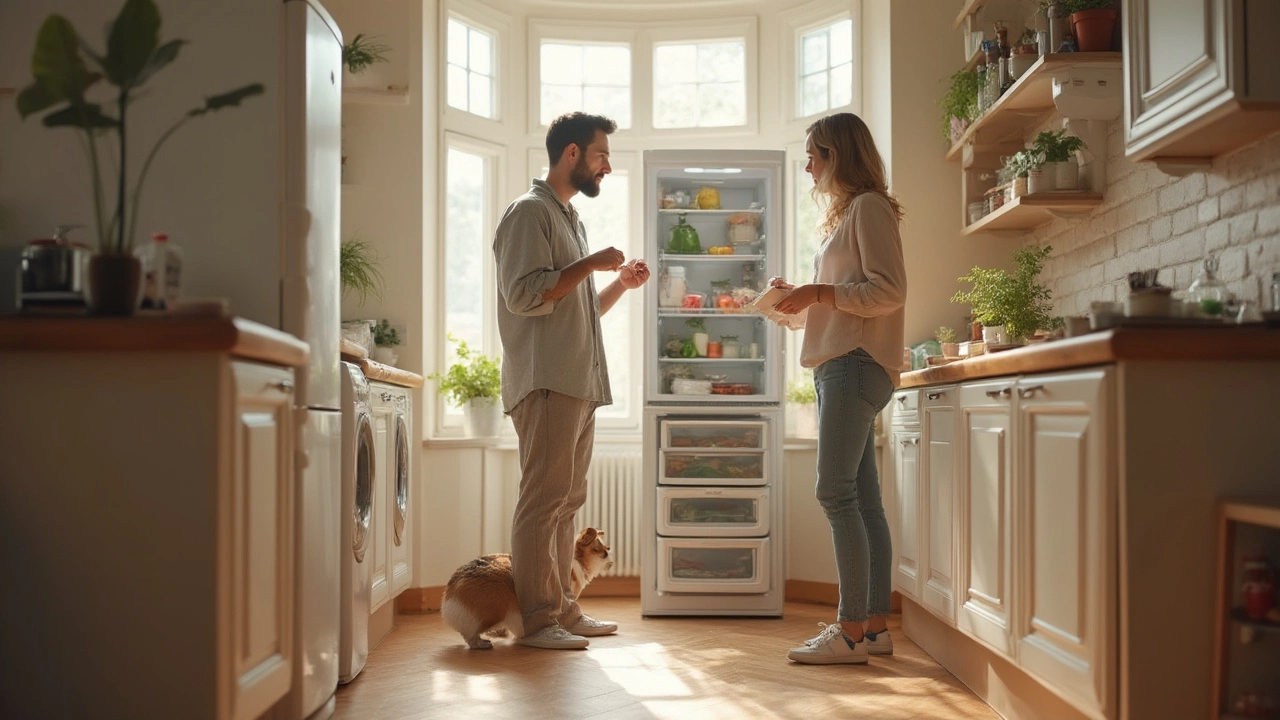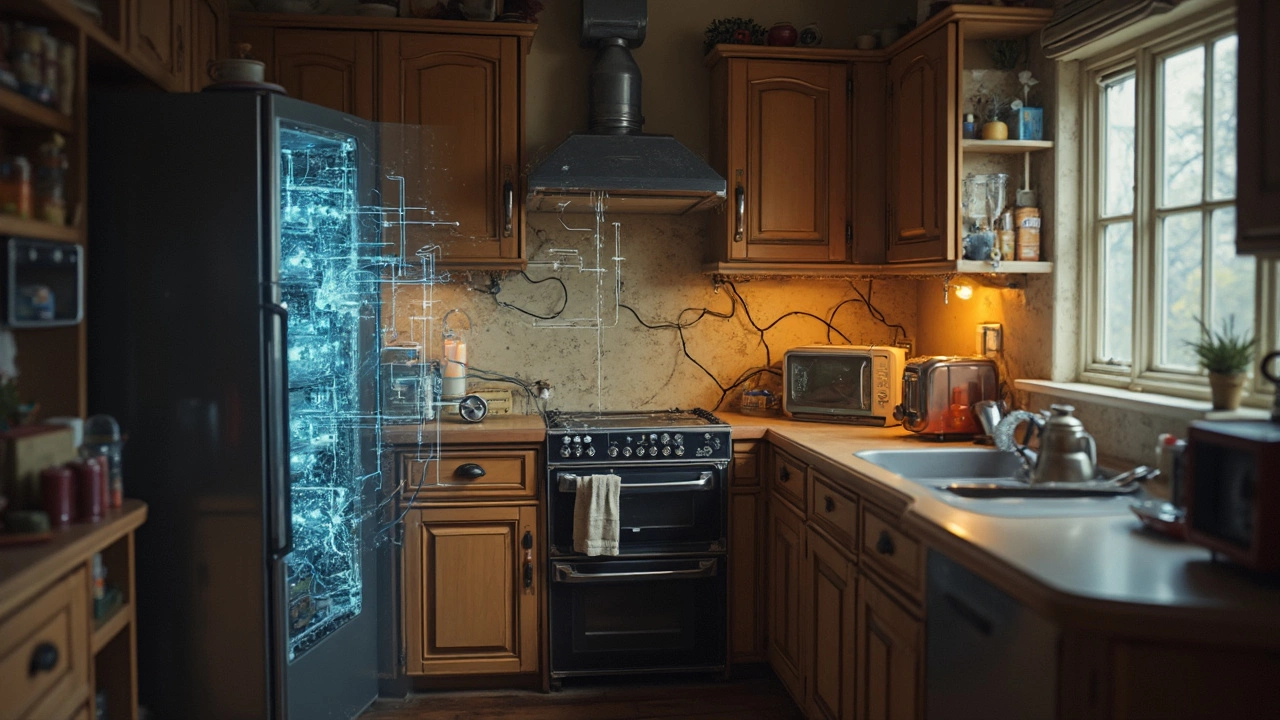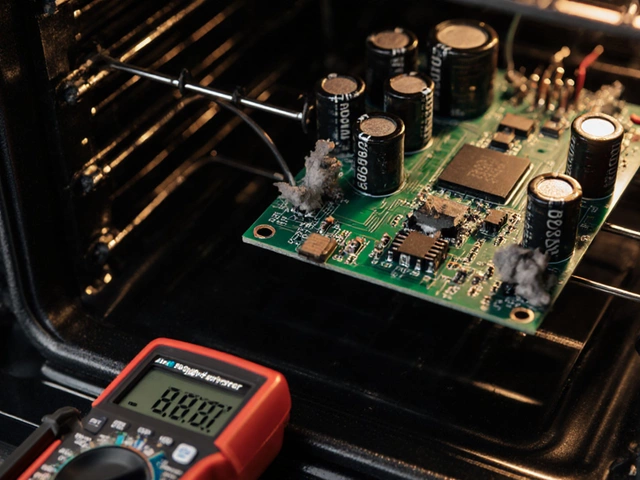Your fridge is on the fritz, and your ice cream is turning into soup. No fun, right? But before diving right into panic mode, let's cover the basics. The first thing you should do is check if your fridge is even getting power. It sounds obvious, but you wouldn't believe how many times a simple unplugged situation is the culprit.
Start by checking the power cord. Is it firmly plugged in and not hanging halfway out? Next, look at the outlet itself. You could use a different device, like your phone charger, to see if the outlet's actually working. If that's all good, but the fridge is silent as a graveyard, the problem might be deeper, and it's time for more snooping.
- Check the Power Source
- Inspect the Thermostat
- Look for Blocked Vents
- Examine the Door Seals
- Consider the Overload Protector
- When to Call a Professional
Check the Power Source
Before diving too far into fridge repair, make sure that your refrigerator is actually plugged in and receiving power. You'd be surprised how many times people miss this basic step. It's easy to overlook the obvious in a moment of stress!
Look at the Wall Outlet
The outlet might be the issue. Grab something small that you know works, like a phone charger, and plug it into the same socket your fridge uses. If it doesn't light up, you might have a blown fuse or a trip in the circuit breaker.
- First, check if a breaker has tripped. Head to your circuit breaker panel and look for any switch that's not aligned with the others.
- Next, try resetting the breaker. Flip it off, then on again. If the outlet still doesn't work, it might be time to call in an electrician.
Inspecting the Power Cord
Take a close look at the power cord. Is it damaged or cut? A frayed cord can stop electricity from getting to your appliance. In such cases, it's safer to replace the cord rather than try to patch it up.
Use a Multimeter
If you're comfortable with a little DIY, you can also use a multimeter to check if the outlet is actually supplying power. Multimeters are handy little devices that measure electrical output.
- Firstly, set the multimeter to AC voltage.
- Insert the probes into the two vertical slots of the outlet.
- If it reads between 110 and 120 volts, your outlet is working fine.
Taking a few minutes to double-check these power issues can save you a lot of hassle and maybe even some unnecessary repair costs on your appliance troubleshooting adventure!
Inspect the Thermostat
Is your fridge playing it cool or getting warmer than a summer day? Either way, the thermostat is the key player here. It's often overlooked, but this little dial or digital display inside your fridge controls the temperature. If your fridge isn't working right, this should definitely be on your checklist.
Checking the Current Setting
First things first, check where the thermostat is set. Sometimes, a cleaning mishap, a rogue elbow in the veggies, or a sneaky kid can nudge the dial to a warmer setting. Make sure it's in the recommended range. Typically, you'll want the fridge set between 35°F and 38°F. If your lettuce is freezing or your milk's souring, adjusting this setting might do the trick.
Troubleshooting Thermostat Issues
If the setting seems right but the fridge is still acting up, let's dive deeper. Here's a quick rundown of things to do:
- Make sure the fridge isn't overpacked. That's right, overloading your fridge with leftovers can restrict airflow, and even an ideally set thermostat can't do much without enough air circulation.
- Check for ice build-up around the thermostat, especially in older models. Ice can cause the refrigerator to misread the temperature. If that's the case, defrosting might be in order. Simply unplug your fridge, let it sit for a few hours, and see if things improve.
- Listen for clicking sounds. A constant clicking noise could mean the thermostat is regularly activating and deactivating, which is a red flag.
If you've tried all this and the fridge still throws tantrums, the thermostat itself could be faulty. In that case, calling a professional may be your best bet. Remember, safe food storage is all about the right temperature, so make this a priority.
Look for Blocked Vents
When your fridge isn't cooling the way it should, blocked vents are often the sneaky villain hiding in plain sight. Air circulation is crucial for your refrigerator to work its magic, and vents play a key role in this process. If these vents get blocked, no chilly airflow means your food could start warming up faster than you'd like.
Spotting and Clearing Vents
First, locate these vents; they're usually on the back wall inside your fridge or freezer. Make sure they're not covered by food or frosty buildup. Overloading your fridge can shove items right up against these air pathways, causing a block. Remember, your fridge needs space to breathe, too.
An often overlooked fact is that a full fridge actually helps regulate temperature better than an empty one. However, it's about smart packing. Leave some breathing room between the packed goodies and the vents.
The American Home Appliance Manufacturers Association notes, "Ensuring clear air vents is essential for efficient refrigerator operation."
Regular Checks
Do a quick spot check of your fridge organization once a week. Are products piled up at the back? Is there frost creeping in? Deal with these potential blockages promptly. A little rearranging can save your fridge from working overtime.
Organizing your fridge can seem basic, but it makes a huge difference. Not only does it ensure longevity for your appliance, but it keeps those pizza leftovers from transforming into science projects unexpectedly.
These refrigerator tips might feel small, but tackling blocked vents early enough can dodge a mountain of issues later. It's all about keeping air on the move inside that trusty fridge, so don't underestimate the power of a clean and clear interior.

Examine the Door Seals
One sneaky little issue that can cause your fridge to stop working efficiently is worn-out or damaged door seals. These are the rubber gaskets that run along the edge of the fridge doors, and their job is to keep the cold air in and the warm air out. If they're not doing their job, your fridge could start to warm up, making it work overtime or stop cooling altogether.
Why Are Door Seals Important?
Think of door seals as the unsung heroes of refrigerator efficiency. They prevent cold air from escaping, which saves energy and keeps your food fresh. A broken seal means your appliance has to pump extra energy to maintain the right temperature, which isn't just a fridge repair headache but also a strain on your electricity bill.
How to Check Your Door Seals
It's pretty simple to check them. Here’s how:
- First, inspect the seals visually. You’re looking for any splits, mold, or parts where the rubber has become hard and inflexible.
- Next, try the dollar bill test. Close your fridge door on a dollar bill and then try to pull it out. If it slides out easily without any resistance, you might need new seals.
Replacing the Seals
If your seals are indeed the issue, don’t worry. Replacing them isn’t as daunting as it sounds. You can usually find suitable replacements online or at an appliance store. Just be sure to have your fridge’s model number handy.
Here’s a neat fact: well-maintained door seals can save you up to 10% on your energy bill annually. And considering how fridge repair costs can add up, this is a pretty useful DIY fix.
Consider the Overload Protector
Alright, so you've checked the power and thermostat, but your fridge is still not cooperating. It might be time to think about the overload protector. This little guy is there to protect your fridge's compressor from overheating, and when it trips, the whole system can shut down.
What Does It Do?
The overload protector is like a circuit breaker for your fridge's compressor. When the compressor gets too hot or overloaded, this device cuts the power to prevent damage. Handy, right?
How to Check It
- Unplug the fridge from the wall. Safety first!
- Locate the compressor. It's usually at the back of the fridge, behind the lower panel.
- Find the overload protector. It’s typically a small device attached to the side of the compressor.
- Remove it gently. Some fridges might need you to unscrew it, while others just clip on.
- Inspect it for any signs of damage or a burnt smell.
When to Replace
If the overload protector looks fried or smells burnt, it’s time to replace it. Also, if it's clicking repeatedly or often, it's not doing its job properly. In such cases, getting a new one might just revive your fridge.
Quick Tip
Not all fridges are built the same, so always refer to your user manual if you're unsure about where or how to access these components.
When to Call a Professional
Was your attempt at DIY fridge repair about as effective as a chocolate teapot? Sometimes, trying to fix things yourself can only take you so far. So, when's the right time to throw in the towel and call a pro?
Electrical Problems
If your refrigerator is not starting, making weird noises, or trips the circuit breaker, an electrical issue may be at play. Messing with electricity can be dangerous, so leave it to the experts if you suspect this is the case.
Strange Sounds and Excessive Heat
Occasional hums and clicks are normal, but loud, grinding noises might suggest a serious issue like a malfunctioning compressor or fan motor. Also, if the back of the fridge feels hotter than cooking bacon on a griddle, your fridge might be overheating. Both problems need a trained eye.
Leaky Situations
Water pooling at the base of your fridge isn't just annoying; it could mean a cracked drip pan, blocked defrost drain, or worse. While some handy folks might be able to fix this, calling in an appliance repair technician with the right tools often avoids a bigger mess.
Frequent Frost Buildup
Are you carving out mini igloos in your freezer every week? Constant frost buildup screams for a solution bigger than checking the door seal or reducing humidity. A pro can help fix defrost system issues or test the thermostat that you might not want to tinker with.
The Fridge's Age
Consider the age of your fridge too. If it's over ten years old, parts might become faulty due to wear and tear. A professional can help decide whether repair or replacement is the smarter move.
Finally, here's a little tip: keeping your fridge maintained regularly can prevent these issues from popping up uninvited. And when things get dicey, rest assured there's always a professional with the right know-how to step in and save the day.





